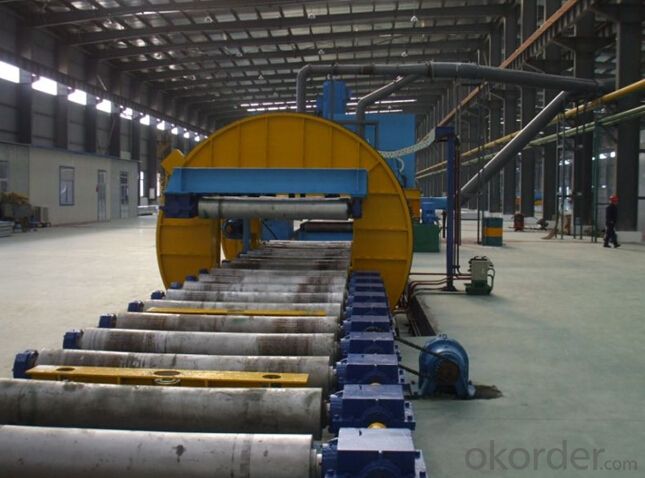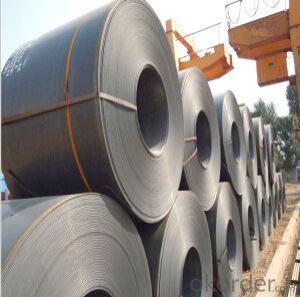Cold Rolled Galvanized Steel Coil for Construction
- Loading Port:
- Tianjin
- Payment Terms:
- TT OR LC
- Min Order Qty:
- 25 m.t.
- Supply Capability:
- 10000 m.t./month
OKorder Service Pledge
OKorder Financial Service
You Might Also Like
description:
Surface Treatment:Coated
Technique:Cold Rolled
Standard:ASTM, JIS, GB, AISI, DIN, BS
Steel Grade:Q195
Width:914, 1000, 1200, 1219, 1220, 1250
Export Markets:Global
Additional Info.
Trademark:STW
Packing:Sea Worthy Packing
Standard:0.2mm to 1.2mm
Origin:China
Production Capacity:10000 Tons Per Month
Product Description
Fit for world's standard (ASTM, JIS, EN)
Yeild strength: 235mpa to 550mpa
Width: From 600mm to 1250mm
Thickness: From 0.2mm to 1.2mm
Coating: AZ50, AZ100, AZ150
Other requirements fit for customer's demands

FAQ
1.What's your MOQ?
25MT, it is for one container.
2.Do you have QC teams?
Yeah, sure, our QC team is very important, they will keep the quality control for our products.
3. What's your normal delivery time?
Our delivery time about 10-20days for standard sizes, if you have other requirements like hardness and width ,it is about 20-40days. But don't worry ,we also try our best for the delivery time ,because time longer and our cost is higher.
4.Are the products tested before shipping?
Yes, all of our PPGI and GI was qualified before shipping. We test every batch every day.
- Q:What are the pros and cons of non-stick and stainless steel pots and pans ?Thanks
- Non stick doesnt stick but after time the non stick doesnt stay non stick and then time to replace Stainless steel. some things may not stick but its best to put down a little pam, or cooking oil, and or aluminum foil
- Q:which one(glass or steel)has more power and velocity? im planning on using my slingshot for hunting.
- Steel has more mass.
- Q:Can steel coils be coated with anti-glare materials?
- Yes, steel coils can be coated with anti-glare materials.
- Q:How are steel coils coated for specific applications?
- Steel coils are coated for specific applications through a process called coil coating. This involves applying a protective layer of paint, polymer, or other coatings onto the steel coils using methods like roll coating or spray coating. The coating is carefully selected based on the desired properties such as corrosion resistance, durability, or aesthetic appeal required for the specific application.
- Q:How do steel coils contribute to energy performance in buildings?
- Steel coils contribute to energy performance in buildings through their use in the construction of energy-efficient heating, ventilation, and air conditioning (HVAC) systems. Steel coils are commonly used in HVAC equipment, such as air handlers and heat exchangers, due to their excellent thermal conductivity and durability. By efficiently transferring heat or cool air, steel coils help regulate the temperature in buildings, reducing energy consumption and improving overall energy performance. Additionally, steel coils are often used in the construction of insulated panels and roofing systems, providing excellent insulation and preventing thermal bridging, thereby further enhancing the energy efficiency of buildings.
- Q:What does "steel roll number" mean?
- The coil numbers in the steel industry are generally applicable to rolled round steel bars. A coil of steel has a specified length and weight. Different rolls have different volumes
- Q:How are steel coils used in the manufacturing of metalworking tools?
- The manufacturing of metalworking tools heavily relies on steel coils, which are an essential component in the process. These coils, typically made from high-quality steel, serve various purposes at different stages of production to produce a variety of metalworking tools. Blades and cutting tools, for instance, are one primary application of steel coils in metalworking tool manufacturing. These coils are usually cut into specific lengths and then shaped and sharpened to create blades used for cutting, shaping, and milling different metals. The use of high-quality steel in these coils guarantees durable, strong blades capable of withstanding the demanding conditions of metalworking processes. Another use of steel coils in metalworking tool manufacturing is for the production of drill bits and other types of tooling. The coils are shaped and machined to achieve the desired size and shape of the tool, followed by a hardening and tempering process to enhance their strength and durability. This ensures that the resulting tools can endure the high-speed drilling and cutting operations involved in metalworking. Additionally, steel coils are utilized to construct the bodies and handles of metalworking tools. The coils are typically formed into the desired shape and size using various techniques like bending, rolling, and stamping. These formed pieces are then welded or fastened together to create the final structure of the tool. The high-quality steel used in the coils ensures that the resulting tool bodies and handles possess strength, rigidity, and the ability to withstand the forces and vibrations associated with metalworking operations. In summary, steel coils are crucial in the manufacturing of metalworking tools as they are used to create blades, drill bits, bodies, and handles. These coils provide the necessary strength, durability, and precision required in metalworking processes. Considered an essential raw material, steel coils enable the production of high-quality, reliable, and efficient metalworking tools.
- Q:How are steel coils protected against moisture and humidity?
- Steel coils are typically protected against moisture and humidity through various methods such as applying a protective coating or wrapping the coils with moisture-resistant materials, such as plastic or wax paper. Additionally, storing the coils in a dry and controlled environment, such as a warehouse with proper ventilation, helps prevent moisture absorption.
- Q:What are the different types of steel coil processing equipment?
- There are several different types of steel coil processing equipment used in the manufacturing industry. These equipment are designed to handle and process steel coils in various ways, allowing for efficient and accurate production. Some of the common types of steel coil processing equipment include: 1. Decoilers: Decoilers are used to unwind steel coils and feed them into the processing line. They are equipped with motorized systems that control the unwinding process, ensuring a steady supply of material. 2. Straighteners: Straighteners are used to flatten and straighten steel coils that may have become distorted during the coiling process. They use a series of rollers to remove any bends or waves in the material, ensuring a smooth and consistent feed into the next processing stage. 3. Slitters: Slitters are used to cut steel coils into narrower strips, allowing for the production of various widths of steel sheets or strips. They consist of multiple sets of circular blades that can be adjusted to cut the desired width. 4. Levelers: Levelers are used to correct any surface imperfections in steel coils, such as wavy or undulating surfaces. They use a series of rollers to apply pressure and reshape the material, resulting in a flat and even surface. 5. Shears: Shears are used to cut steel coils into specific lengths. They can be hydraulic or mechanical and are designed to provide clean and precise cuts, ensuring the desired dimensions are achieved. 6. Recoilers: Recoilers are used to rewind processed steel coils back into a tightly wound coil. They can be motorized or manual and are essential for storage and transportation purposes. 7. Edge trimmers: Edge trimmers are used to remove any excess material from the edges of steel coils. They ensure a clean and uniform edge, allowing for better handling and further processing. 8. Coil cars: Coil cars are used to transport steel coils within the processing facility. They are equipped with hydraulic or mechanical systems that allow for easy loading and unloading of coils onto other equipment. These are just some of the different types of steel coil processing equipment used in the industry. Each equipment plays a crucial role in the manufacturing process, ensuring the efficient production of high-quality steel products.
- Q:How are steel coils used in the production of conveyor systems?
- Steel coils are used in the production of conveyor systems as they are transformed into various components such as conveyor belts, rollers, and frames. These components provide the necessary strength, durability, and support required for efficient material handling and transportation in conveyor systems.
1. Manufacturer Overview |
|
|---|---|
| Location | |
| Year Established | |
| Annual Output Value | |
| Main Markets | |
| Company Certifications | |
2. Manufacturer Certificates |
|
|---|---|
| a) Certification Name | |
| Range | |
| Reference | |
| Validity Period | |
3. Manufacturer Capability |
|
|---|---|
| a)Trade Capacity | |
| Nearest Port | |
| Export Percentage | |
| No.of Employees in Trade Department | |
| Language Spoken: | |
| b)Factory Information | |
| Factory Size: | |
| No. of Production Lines | |
| Contract Manufacturing | |
| Product Price Range | |
Send your message to us
Cold Rolled Galvanized Steel Coil for Construction
- Loading Port:
- Tianjin
- Payment Terms:
- TT OR LC
- Min Order Qty:
- 25 m.t.
- Supply Capability:
- 10000 m.t./month
OKorder Service Pledge
OKorder Financial Service
Similar products
New products
Hot products
Related keywords




























